#Travel Guide
Explore tagged Tumblr posts
Text

Kraków, Poland by Dawid Wysocki
#kraków#krakow#poland#europe#travel#traveling#wanderlust#church#polblr#polishcore#photography#travel guide#travel blogger#travel blog#travel bucket list#travel destinations#explore#vacation#trip#adventure
609 notes
·
View notes
Text

Todgha Gorge in Morocco
#adventure#adventure time#culture#travel#travel guide#road trip#morocco travel#solo travel#traveling#travel photography#travelphotography#trip#travel blog
147 notes
·
View notes
Note
Which places of greece are ruined by tourism and would it be ok to visit them in winter ? Asking because i'd really like to see all of greece but i dont want to participate into what makes people lives shit
I'd say that while Greece has gotten very touristy in many places by now, the most touristy places are still (barely) hanging in there and have not been totally ruined yet. The two most critically affected by tourism places are Santorini and Mykonos islands. Aside from Santorini perhaps, which really receives more tourists than it can bear, in the other touristy areas the situation is not so bad yet that you could cause problems with your mere presence there. Tourists do become a problem due to their behaviour rather than their presence, so I am going to give you some tips for an ethical, viable for the local population vacation in any region in Greece.
Ethical travelling in Greece:
Do not use Airbnbs. They have caused severe housing problems in the country. Basically locals can not find houses to rent / buy because everything is modified into an airbnb. Please, do not use airbnbs. Every single type of hotel, from small family run businesses to major hotel chains, they are all more ethical and beneficial to Greek society and economy than the airbnbs.
If you are travelling in the Aegean islands in the high season, avoid the excessive use of tap water. Most Aegean islands have severe shortage of water resources. The little resources that they have get wasted in filling the countless pools of the hotels. And I ask, what is the point of so many pools in Greece? Are tourists really doing all the fuss to reach a Greek island to spend their days swimming in the pool and stare at a wall? You can do this at home. I really don't understand this. Go to the beach. Greek beaches are typically very safe unless you are advised otherwise by the locals. Ask your hotel receptionist or your tour guide if some beach is suitable only for very seasoned swimmers or is better avoided for any other reason. Please, do not support the endless useless pool constructions that suck all the water. Apart from the pools, practice reasonable use of tap water in general (i.e while showering).
Ideally, avoid cruises. They are the biggest culprit of tourist overcrowding and they virtually leave zero money to the local society.
Keep alcohol consumption within reason. Greeks love to drink and have fun. However, unlike in Northern and Western Europe, excessive drinking is not at all part of our cultural understanding of having fun. There are unfortunately 2-3 spots around the country which have become destinations of young tourists aiming to get hammered every night. Their drinking and its consequences disrupts severely the quality of living for the locals and other travellers. If you (not saying this personally, but generally) tend to drink enough that ending up crawling or vomiting in a street or a hospital is not unlikely... just don't do it. Don't do it, it affects negatively the local people's lifestyle and their sense of safety. Remember also that the Greeks like to stay out with their kids until very late at night, don't create publicly images that could be questionable for a child to see.
You can dress however you want in Greece. The only limitations are to keep nudism for nudist beaches and if you decide to visit monasteries, then you should comply with their dress code, which is usually skirts / dresses and covered shoulders for women and ideally long trousers for men. Women in Greece do not cover their heads / hair in religious places. Churches have a more liberal dress code but, still, don't go in in your swimsuit or something.
Do not climb on the churches, private properties and hotels just to take a slightly better photo for your Instagram.
That's all, I believe. These are the Greece-specific ethical travelling tips.
Should you go to touristy places in winter instead? NO
Like I said, if you are concerned that your mere presence is going to be an issue to the locals, then no, you don't have to change your plans and come in winter. Maybe only if you decide to go to Santorini, then it would be indeed better to go in spring or in autumn, not only for the locals but for your own experience as well. Santorini is an island famous for its vistas, the volcano, its towns and archaeological sites and not so much the beaches, so why go there in the summer and get pressed by the tourist hordes? Go in another season. But NOT in winter.
There is a huge misconception that Greece is eternally warm like a tropical country. Greece is a temperate country. If you go to the islands in winter, you will get winter in the islands, with all the wind and the humidity and the shut down businesses and half of the local population fled to the mainland. Forget about island / summery vibes. If you fall in love with a place so much that you end up wanting to experience it all year round then sure. But if it's your first time in that place, it's not very wise to visit it for the first time in its absolute lowest, right?

Not sure how you imagine a Greek island in winter but it's probably not like that, is it? I am not saying it will definitely snow, but you will be taking your risks. This is from the famous Mykonos btw.
So, if you want to come in the winter, you have to go to winter destinations (mountains, ski resorts, landlocked parts of the mainland, forests, towns and villages in higher altitudes etc). Every season has its best things to see. The islands are for the summer and the spring. Spring and autumn are seasons in which you can prolong your summer in the south or your winter in the north but even those are worthy to be visited for their own strengths.
City breaks / urban destinations are good all year round, least of all summer, because the cities tend to get super hot.
Summarizing, if you want to come in the winter just for the sake of the locals, then no don't worry about it. If you want to come in the winter because you are afraid of the overtourism but wish to see a summery destination, then my advice would be to come in the summer but simply replace the over-touristy destination with a less busy look-alike. Good substitutes for Mykonos are Paros and Ios islands. Good substitutes for Santorini are Milos and Folegandros islands.
"Seeing all of Greece"
I must examine a little what you mean by "I'd really like to see all of greece". If you mean "I'd like to visit any part of Greece so all of Greece is okay for me", it's okay, I get that. If you mean, "I want to make a plan of fitting all of Greece in the same season / trip without bothering the locals" forget about that. You're not visiting all of Greece, not now, not in many many revisits. Don't be fooled by any influencer or youtuber showing you around or any foreign travel article about where to go to, it's total misinformation, 99,9% of the time they are not seeing shit. Moreover, they are not being accurate about the size of the country, how navigable it is, the microclimate variety and the destination density per surface area. There is this portrayal of Greece in foreign media as this tiny flat easily navigable country with all its tinier islands and beaches concentrated within arm's reach. All of this is the exact opposite from the truth; Greece is of average size, extremely mountainous, hard to navigate, with numerous islands larger than you think and in considerable distances with each other. This is why you should NOT DO ISLAND HOPPING IN GREECE, I can't stress this enough, it's the most popular and yet the worst way to travel in the country. The most superficial way, the most tiresome way and simultaneously the way that guarantees you will see the least stuff. Lose - lose - lose situation.
The clever plan is simple, much simpler actually. You stick to one or max two mainland regional unit(s) or one island or max two small islands or tops a mainland region and a nearby island if you have a lot of time, and you explore that thoroughly either with a tour guide or with a map / book guide for this specific region that you explore by yourself. You can find such map / book guides everywhere in kiosks, bookstores, some markets etc. This way you're gonna like Greece ten times over than if you were just ticking off popular islands / destinations from your list. I believe every single Greek will attest to this as well as those loyal travellers we have that return every year - some do it for decades. Those follow this plan. Famous people do this too - I have never heard of foreign celebrities island hop in Greece (unless they have private yachts and stay in those which is more like a cruise rather than island hopping), they choose their destination and stick to it. It's because they know better, island hopping is a SCAM. Ticking off popular destinations is a SCAM. Not because the famous destinations don't deserve their popularity but simply because this is not the efficient / clever way to travel in Greece (and in most places, but especially Greece). Take my word for it! The country is not... structured for this type of travelling.
Summary:
You don't have to be overly conscious of your presence in touristy areas as long as you practice common sense and don't actively disrupt the lives of the locals in the ways described above.
If you are really concerned about overtourism, better change destination with a similar less busy one rather than change the season of visiting. Remember, different places are better in different seasons.
Do not island hop and do not have unrealistic expectations about how much of Greece you can see in a trip. Trying to meet such common expectations, that are founded on widespread misconceptions, will certainly make your travelling experience worse or not as good as it could have been. Based on your interests choose one specific region only and explore this one thoroughly without worrying that you will miss out, because you won't.
93 notes
·
View notes
Text
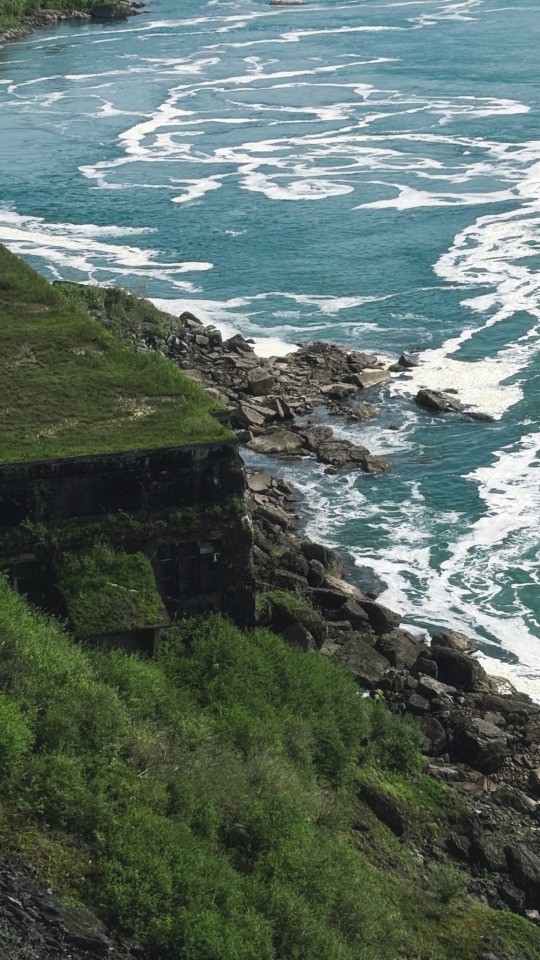

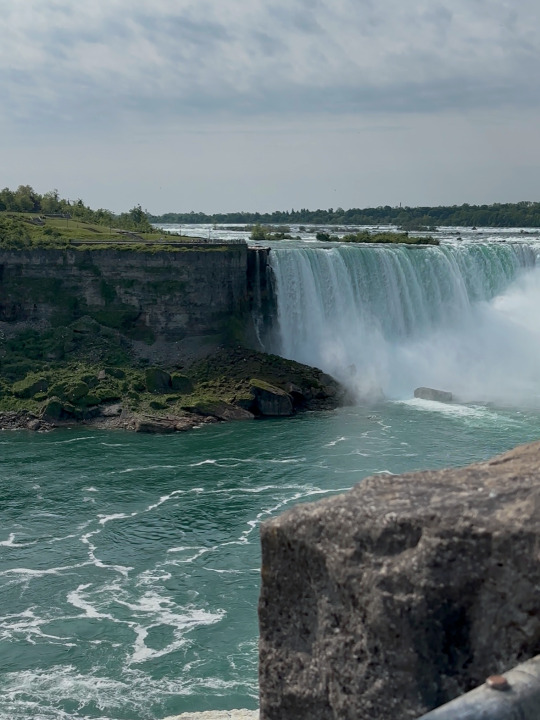
📍 ℕ𝕚𝕒𝕘𝕒𝕣𝕒 𝕗𝕒𝕝𝕝𝕤
#niagara falls#my photos#aesthetic#waterfall#natural wonders#nature#naturecore#nature photography#my photgraphy#photography#niagara river#canada#ontario#america#north america#geology#travel guide#travel#travel planning#vacation#sightseeing#nature aesthetic#earth aesthetic#grunge aesthetic#soft grunge#photooftheday#dark#peaceful#amazing beauty#beautiful
63 notes
·
View notes
Text
Idaho Tour Guide: the US's #1 secret tourist destination
By me, because I couldn't get it off my mind.
This is a summer plan. You should not do this in winter. Winter has amazing locales and activities, but those are best visited on a ski vacation or other winter sport touring. Especially if you've never driven in snow before, Idaho is best experienced from June to September.
If you're flying, fly into Salt Lake. Rent a car and drive to whichever city you want to make a base of. There is no public transportation in 95% of Idaho and the airports are expensive to fly in and out of, if there's even one in the area. Salt Lake and Northern Utah is a destination unto itself, but there's a lot of shared cultural identity between Northern Utah and Southeast Idaho. If you want to make a vacation along the Book of Mormon Corridor, it's 100% doable and I'm happy to make recommendations.
While it's possible to move from town to town every night, I'm using the traditional tourist model where you pick a base town and make day trips.
Idaho has tons of hot springs — more than any other state in America. While I've put a few on the list, feel free to add more.
There are tons of museums on this list, and even more not included. You're more likely to find a museum than a bar in many towns, so embrace the culture and take up museum crawling.
Floating (tubing to the rest of the world) is an Idaho summer pass time. SE Idaho uses canals and sloughs, Western prefers lazy rivers. St. Joe is included below (thanks for the rec!), but you can insert it into almost any base city's plan. I'm just not telling what my float destination is!
Base 1: Bear Lake (3-4 days)
Camp out on the lake, paddle board, go bird watching at the National Wildlife Refuge (NWR)
Take a day to visit Lava Hot Springs. This hot spring is commercially developed and has an onsen vibe... And a highway-crossing water slide.
Take a day to see the Chesterfield pioneer ghost town, see the manmade geyser in Soda Springs, and visit the Butch Cassidy Museum in Montpelier.
Visit Cache National Forest and tour Minnetonka Cave
Base 2: Driggs (2-3 days)
Spend the day driving Scenic Highway 26, hiking the Upper Palisades, and getting square ice cream in Swan Valley.
Book a hot air balloon ride for sunrise, tour the vodka distillery in the morning, and visit the Geotourism Center or Teton Valley Museum in the afternoon.
If you like hiking, the Darby Wind Caves hike, also called the Monument hike, is 6 miles and a hike almost every SE Idahoan goes on at some point in their lives.
Driggs is just across the Rockies from Jackson Hole, Grand Teton, and a few hours south of Yellowstone. If you want to jump over and add those, it's excellent, but know that Jackson (and Driggs) are expensive like ouch.
Base 3: Idaho Falls (6-8 days)
Spend a day in Ririe/Rigby. Stop at Heise hot springs for the morning for the small town swimming pool vibe, and tour the Farnsworth Museum to see where (and how) TVs were invented. Betcha didn't know TVs were invented in Idaho.
Take a day to see the LDS temple visitor center, the Museum of Idaho, and rent a full auto from Guns & Gear. Or spend your evenings doing one of each once you're back from your day trip. IF also has an excellent aquarium and a fantastic zoo, but they don't compare to Atlanta or Salt Lake, so use your time wisely.
Take a day for Blackfoot and Pocatello. See the Museum of Clean, the Potato Museum, try a double black diamond mountain biking trail, or gamble at Fort Hall's casinos.
Take a day and visit St. Anthony. Try dune buggy racing at the sand dunes, and go fishing up at Henry's Fork, or try out Bear World wildlife safari.
Take a day to museum crawl through Rexburg. See the Teton Dam Flood exhibit, visit BYU-I's numerous campus exhibits, and try out the university's ropes course.
Take a day for Arco. Hike through Crafters of the Moon National Monument, tour the old nuclear reactor ERB-1, and see the Devil Submarine.
If you can, visit Idaho Falls over the Fourth of July. It's the largest fireworks display west of the Mississippi.
No matter when you visit in summer, there's a good chance there's a rodeo happening nearby. If you can time it right, it's worth a day to see one.
Base 4: Salmon (4-6 days)
Drive from Idaho Falls through Spencer, to visit the opal mine where you can mine for pink opals in the only place they've ever been found.
Take a day to see Salmon; visit the Sacajawea Interpretive Center and the Lemhi County Museum.
Visit the Frank Church River of No Return Wilderness, and/or hike to the primitive Goldbug Hot Springs.
Go whitewater rafting on the Salmon river. (It's in the top 3 whitewater rafting spots in the world!)
Base 5: Ketchum (4-11 days)
Visit Stanley — the coldest city in the Continental US — to see the Museum, stop at the Custer ghost town, and stay overnight in the US's only dark sky reserve.
Take a day (or a week) to hike the Sawtooths and the other five mountain ranges in the area.
Take a day to visit the Sun Valley resort; go to the spa, go ice skating (outdoors, year round), and eat at the restaurant. It is bougie and pricy, but it's world class bougie.
Museum crawl through Ketchum. They've got, like, a dozen museums there. Starbucks has an exhibit. I'm not joking.
Base 6: Twin Falls (4-5 days)
Spend a day in Twin. See the "Niagara of the West," see the Evel Knievel jump site, be a daredevil and go BASE jumping yourself (it's legal!), and see the Herrert Center for Arts and Science.
Head out to City of Rocks and spend the day bouldering in an internationally-recognized rock climber destination.
Spend a day or two in Hagerman and Thousand Springs. See the titular springs, the fossil beds, the fish hatchery, and, if you're too much of a chicken to try whitewater rafting on the Salmon, they've got beginner friendly rafting here.
Head north to Shonshone and see Minidoka NHS — a Japanese internment camp from WWII — and the Shoshone Ice Caves.
Base 7: Boise (5 days)
Hit the sand dunes at Bruneau; go sand boarding and visit the observatory.
Tour Boise's Old Penitentiary, visit the Basque Block, and see the Reptile Zoo or World Center for Birds of Prey
If you visit at the end of July or beginning of August, you might catch the Basque Festival — the largest in the US.
Spend a day wine tasting and touring Boise's wineries.
Take a day to see Hell's Canyon, the deepest Canyon in the US. You can go whitewater rafting, book a jet boat tour, hike from rim to river, or go petroglyph hunting.
Base 8: Moscow (4 days)
Stay at least one night in the Dog Bark Park Inn. Just look it up and tell me no.
Museum crawl! See the U-of-I arboretum, the Lewis and Clark center, the Appaloosa Museum (yes, there's a museum for that), and/or the Latah Historical Society.
Plan to visit Saint Maries Emerald Creek, where you can go rock hounding for star garnets (the only other place those exist are in India).
EDIT: Float the St. Joe River.
Spend a day road touring through Nez Perce NHS and bounce from Oregon to Montana in a single day.
If you want to stop in Missoula, MT, this is your chance. It's got a great bar scene, and noticably fewer museums.
Base 9: Coeur d'Alene (6-9 days)
Take a day, or three, and see Wallace. Tour the old silver mines, hike Pulaski Tunnel, bike Hiawatha, and visit the Silver Rapids water park. EDIT: don't forget to stop at Kellogg, just outside of Wallace, which has the longest gondola ride in North America and, of course, a museum.
Tour CDA; see the alpaca farm, the Old Mission, and, of course, the Museum of Northern Idaho.
Visit Silverwood Theme Park. It's the biggest in the Pacific Northwest.
Take a day to visit Coolin. Hike out to Roosevelt Grove of Ancient Cedars, see the Priest Lake Museum, and ride the natural water slide at Lionhead.
Take a day or two and see Sandpoint, the lake town, and take the Lake Pend Oreille lake cruise.
Drive up to Bonners Ferry to go huckleberry picking, drive the Selkirk Loop, and see the Boundary County Museum. EDIT: the Kootenai NWR is worth the visit, according to a moot!
Annnnnyway, Idaho is great, see ya bye
42 notes
·
View notes
Text
Races are 2 hours, Formula 1 Friends are forever ❤️🏎️✨
41 notes
·
View notes
Text
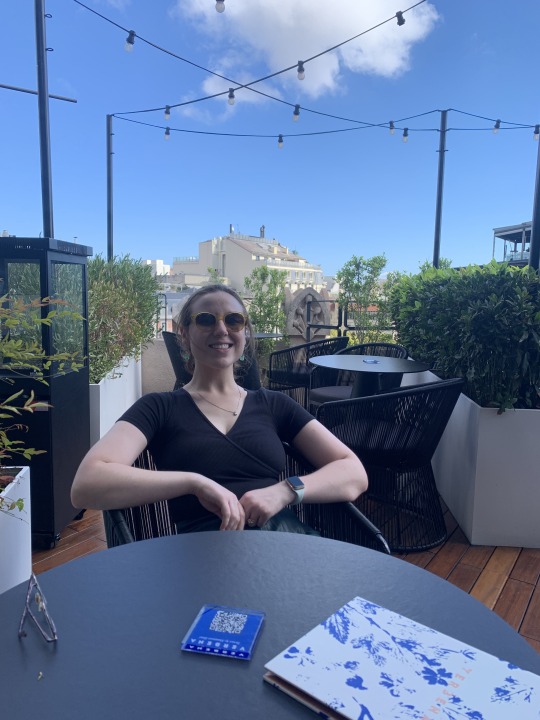
Naples Trip with Mari-Alina Timoshchuk
#naples#italy#timoshchuk#mari-alina#mari-alina timoshchuk#mari alina timoshchuk#travel blog#europe travel#travel diary#travel photography#travel guide#travelling#europe trip
21 notes
·
View notes
Text
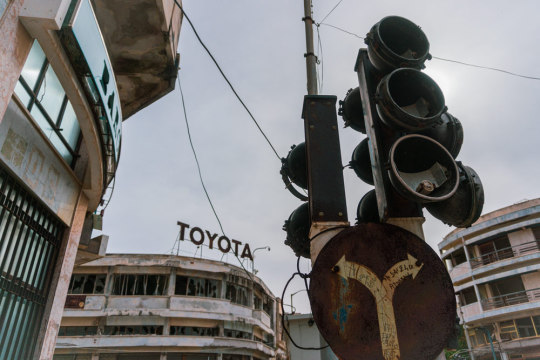
Varosha Ghost Town, Cyprus
#photography#photographers on tumblr#female photographers#picture#street photography#urban#photoshoot#city#photographer#slovakia#urban exploration#urban photography#urban landscape#urban fantasy#urbex#urbexplaces#urbexphotography#urbexexploration#abandoned house#abandoned places#abandoned#abandoned buildings#dark tourism#travel tips#travel#travel guide#traveling#travelling#travel photography#wanderlust
22 notes
·
View notes
Text
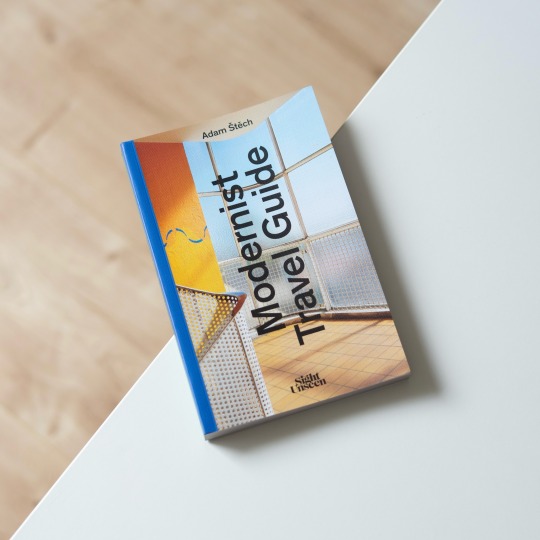
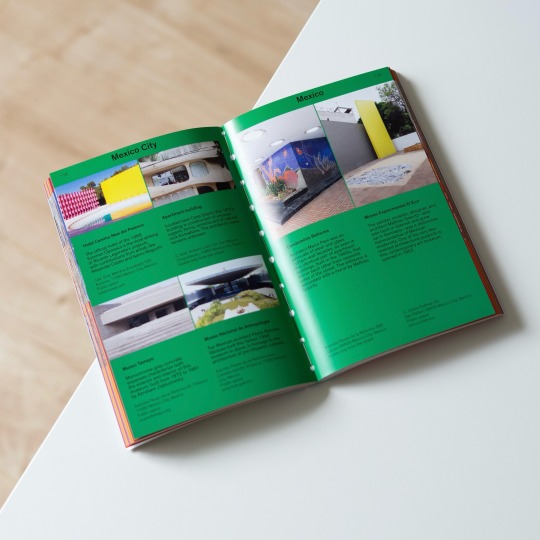
Literally for decades Adam Štěch aka @okolo_architecture has traveled the world to document modernist architecture and interiors, a constant hunt that unearthed countless gems that otherwise would likely have gone unnoticed. Štěch has visited roughly 50 countries and explored some 10,000 buildings, interiors, bars, museums etc. etc., an impressive itinerary that he frequently shares on Instagram but also as frequent contributor to magazines like Wallpaper and World of Interiors.
Due to his expertise people frequently hit him up with questions regarding what to go and see in city xyz, questions that, at least to some degree, are answered in Štěch‘s latest publication: the „Modernist Travel Guide“, recently published by Sight Unseen, collects some 400 must-see examples of buildings and interiors in 30 cities, among them Antwerp, Barcelona, Copenhagen, Helsinki, Rotterdam, San Francisco, São Paulo and Zurich. Each entry features a photograph, a brief text and the respective entry’s address as well as information on whether it is accessible or if it can only be viewed from the street.
Thanks to Štěch‘s in-depth knowledge of modernist architecture around the world the guide of course contains well-known, not to be missed buildings like Alvar Aalto’s own house in Helsinki, the Sheats-Goldstein Residence in Los Angeles by John Lautner or J.J.P. Oud’s the Café De Unie in Rotterdam but predominantly hidden gems. These include the stunning Edificio Colón in Barcelona, Georg Kolbe Museum in Berlin or the Edificio Bretagne in São Paulo, each of them brilliant examples of their city’s architecture and certainly not on the average tourist’s list of sites to visit.
In view of these qualities the „Modernist Travel Guide“ is a must-have even for those who aren’t restlessly traveling the world like the its author but simply love to get to know great (interior) architecture. Highly recommended!
18 notes
·
View notes
Text
🌴 Explore Phuket Attractions! 🌟 Dreaming of sun-soaked beaches, ancient temples, lush viewpoints, and unforgettable nightlife? Dive into our curated Phuket travel guide — from chill days at the Elephant Sanctuary and panoramic moments at the 45m‑tall Big Buddha, to electric nights on Bangla Road and beach‑front parties with international DJs. Uncover Phuket’s hidden gems, cultural highlights, and must‑visit hotspots in one scrollable adventure. 🏝️
#Phuket#Thailand#island#phuketbeaches#islandtours#Phuketnightlife#traveltips#thaimbc.com#nightlife#travel#Bangla Road#adventure#Big Buddha#travel guide#travel tips
15 notes
·
View notes
Text






Gdańsk, Poland by myphotography_com
#gdańsk#gdansk#poland#europe#pomerania#travel#wanderlust#traveling#travel europe#explore#beautiful places#places to visit#travel destinations#travel bucket list#travel guide#tourist#travel blog#destinations#vacation#holiday#pomorskie
284 notes
·
View notes
Text
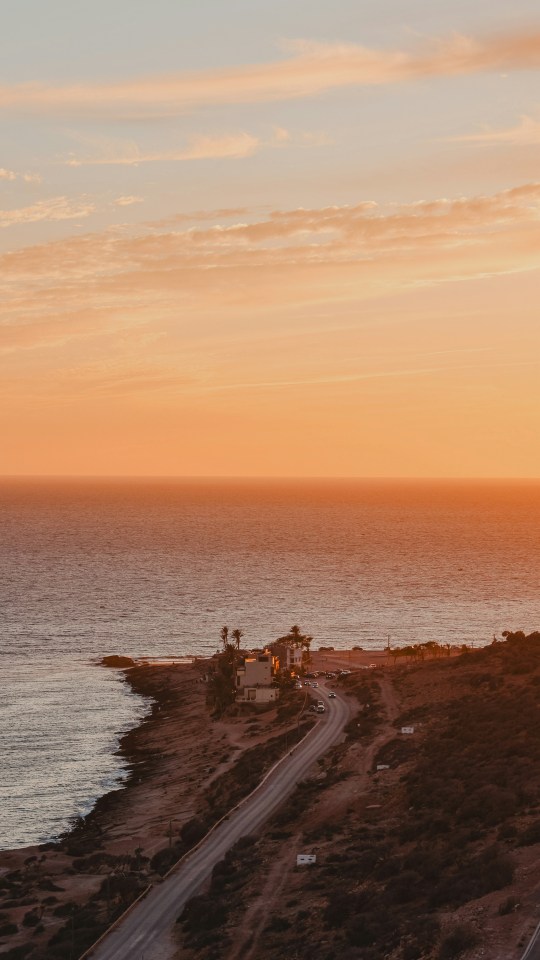
Taghazout Beach
#adventure#adventure time#culture#solo travel#travel#travel guide#travel photography#traveling#wanderlust#travel blog
38 notes
·
View notes
Text



📍ᴛʜᴇ ᴅᴇᴠɪʟ’ꜱ ᴘᴜɴᴄʜʙᴏᴡʟ
#my photos#aesthetic#grunge#travel#travel guide#photography#nature#my photgraphy#sightseeing#canyon#cliff#hiking#vacation#nature photography#natural wonders#soft aesthetic#green aesthetic#canada#rock formations#earth aesthetic#earth#mother nature
25 notes
·
View notes
Note
Hi! I’m planning a trip to Greece but all I can find is info on the beaches and island hopping but I personally wanna go to see the mountains rather than do any partying stuff, the landscape and geology of Greece is fascinating and I’d like to see it up close but at the same time I want to be supporting local communities rather than major tourist corporations. Do you have any tips? Also if it’s helpful I am learning Greek so I don’t mind any recommendations for areas that are unlikely to have any English speakers! Thank you! 😊
Hello! I believe the official site of Greek Tourism Organisation "Visit Greece" has plenty of information about all places in Greece, not just the islands. Now, before getting to exactly what you asked, I would like to make some clarifications so you have a more accurate picture about Greece as a travel destination.
First, while the islands get the tourists by a long margin, it does not mean that they are all about partying. Only few islands are specifically partying destinations, namely just Mykonos and Ios, although even there you might be able to find regions which are more traditional and good for more chill, authentic and secluded vacations. Also, if staying far from mass tourism is very important to you, there are several islands that are not very known to tourists yet. Because they are islands, by nature some of them not yet touched by mass tourism and investments are actually very remote, more remote than many places in the mainland.
Second, Greece indeed has an interesting landscape and it has it both in the mainland and in the islands. While most islands have lower altitudes and less vegetation than the mainland, the vast majority has a very rugged terrain too. The type of "flatbread" landscapes, as I call them respectfully, virtually does not exist in Greece. Then four out of five active volcanoes in Greece are in the islands, which create interesting landscapes. And then there's Crete with its ultra mountain ranges. This is not me trying to sway you from your wish to go to the mainland, in fact I do think the mainland is severely underrated. I just want to give you a more spherical and accurate perception of Greece as a destination. So back to your ask!
I had trouble figuring out how to approach your ask. Asking me about seeing "the mountains" is in fact not easier than asking me about seeing "the islands". I thought about it long and hard (a bit too long, I hope you're still hanging around to see it) and based on your interests as described above I decided to offer four general plans about your itinerary. I called them "the plans of the triads". Every plan is a triad, I'll explain this in a bit.
Apologies in advance that I will go out on a limb and not include Thrace and include only a tiny bit of Macedonia in my plans. I did not include Thrace because even though it has the Rhodope mountains and perhaps the best or amongst the best woodlands, it is not as mountainous as the other regions. As for Macedonia, I include it only slightly and it's definitely a choice because literally the four biggest mountains in Greece are in Macedonia LOL including most of freaking Olympus. However, the reason I am leaving it out for the most part is because it is a slightly less mountainous region than the others, in the sense that there are larger intervals of hills and lowlands between the mountainous destinations for someone who tries to make a clever mountain itinerary, you know? So, you understood this correctly, I am leaving Olympus out of this lol. I will also leave out Mount Pelion of Thessaly, the most touristic Greek mountain, which is gorgeous, because I believe it's more cosmopolitan and not what you're asking for exactly. I had to preface this so one would not be weirded out by my exclusions, they are conscious choices.
So, I call the plans triads because all plans are based on visiting three geographic regions. These regions are all next to each other and they are all very mountainous so it would make it easier for you to explore in relatively close distances. By the way, you will need to rent a car for this or come by land with your own. You don't get to do a mountain itinerary in Greece with a bus or a train. Unless you get in touch with a travel agency but they will have some other itinerary in mind perhaps.
The triad plans are four:
The Screamer
The Recluse
The Athenian boy
The Mediterranean alternative
Here's a map with all plans:

The Screamer (Ioannina - Trikala - Grevena)
Why that name: I call this one the "screamer" because it is the most obvious choice perhaps for someone who wants mountains. It's not necessarily more mountainous than the others but it is the flagship of mountainous and landlocked mainland destinations in Greece.
Which major regions are featured: Epirus, Thessaly and Macedonia.
What's the X-factor: It has perhaps the ideal combo of "geology and landscape" out of the four as I am not only recommending mountains here but also the most famous natural wonder of the country and also a Record Guinness gorge.
Season: From middle spring to middle autumn, you don't want to get trapped there in a snowstorm.
Places you can hope to see in this plan ideally:
the UNESCO World Heritage Meteora Rocks and their medieval monasteries, as well as the scenic towns surrounding them
the National Park of Vikos-Aoos with its trademark Vikos gorge, the deepest gorge in the world in relation to its width
the National Park of Northern Pindus with the woodlands of Valia Calda
the quaint mountain villages of Elati, Pertouli and Neraidochori in Mount Koziakas, Trikala
the region of Zagori with its numerous UNESCO Cultural Landscape traditional villages
Mount Tymfi, also in Zagori, with its alpine lake
the northern part of Tzoumerka (Athamanian mountains) with villages such as Kalarrytes and Pramanta
the lake city of Ioannina, the 6th largest in Greece. If there, visit also the lake's island and its museum. It's the only place in Greece you can eat frog legs and lake eels, if for some reason you're up for this
the towns of Trikala and Grevena. Eat mushrooms if you visit the latter.
Metsovo, one of the largest mountain towns of the country. Visit the museums and eat cheeses and cured meats there.
Samarina on Mount Smolikas, one of the highest mountain villages in Greece and the Balkans. Smolikas is the second tallest mountain after Olympus but it has smooth slopes and it can be easily hiked.
IF you take the risk to go in winter, you can visit the Ski Resort of Vasilitsa in Grevena. Check if it's open / it has snowed enough first.
Remember, winter in Greece is either summer or Siberia, there's no in between and it's hard to predict which version you'll get.
Note! If you hike up to the alpine Dragon Lake of Mount Tymfi, DON'T swim in it even if it's summer. The lake hosts endangered endemic tritons and other fauna that is vulnerable to germs we might introduce to them.
Danger! If by any chance, you lose your way with the car in the mountains of Ioannina and Trikala, DON'T try a road named "Katara". It's a dangerous road. Keep driving in the highway.
Fun Fact: In this region, especially in Grevena, if you're very lucky, you might see bears. Greece's brown bears (almost?) never attack humans but of course keep your distance and observe from afar.
Will I be able to see all this in my journey: No, of course not. From now on, you'll have to make your internet search, check these places, find the ones you like best and ideally choose ones close to one another, check the distances, the accessibility, the average weather, the accommodations.

Meteora, the Dragon Lake of Mount Tymfi and Northern Pindus (probs Mount Smolikas). All these pics are clearly taken in spring, April or later.
The Recluse (Karditsa - Arta - Eurytania)
Why that name: From all the plans this is the one that is most likely to feel far from organized tourism and with the highest chances of meeting people not knowing English.
Which major regions are featured: Thessaly - Epirus - Sterea Hellas
What's the X-factor: It's a highly untouched and authentic feeling region with traditional pretty villages, imposing mountain scenery and several lakeside destinations, an ideal region to seek serenity and getting away from it all. At the same time, it has the most mountainous regional capital city in the country as well as high quality accommodation, including chalets.
Season: From middle spring to middle autumn, you don't want to get trapped there in a snowstorm, unless you have the means to spend the adverse weather in your accommodation, without worrying about being back on time.
Places you can hope to see in this plan ideally:
Agrafa mountains and their villages
the well known Plastira lake, it has organized tourist facilities
Karditsa town and its UNESCO protected public market
The region of Argithea in Karditsa with the small but beautiful Stefaniada lake
the central and southern part of Tzoumerka (Athamanian mountains), their villages such as Agnanta and Theodoriana, their woodlands and their waterfalls
The town of Arta with its fabled Bridge of Arta
Kremasta, the largest man-made lake in Greece
if you come in winter, the Ski Resort of Velouchi
Karpenisi, the mountainous capital of Eurytania
The natural wonder of Panta Vrechi Canyon. You 'll probably know that "Panta Vrechi" means "it's always raining".
the beautiful region of Prousos with the 12th century monastery and the canyon of the Black Cave
Will I be able to see all this in my journey: No, of course not. From now on, you'll have to make your internet search, check these places, find the ones you like best and ideally choose ones close to one another, check the distances, the accessibility, the average weather, the accommodations.

Agrafa mountains, the village of Agnanta in the Central Tzoumerka mountains and Proussos.
The Athenian Boy (Boeotia - Phocis - Phthiotis)
Why that name: Because it is the plan closest to Athens, in case you start your journey from there (most likely) or intend to visit Athens properly as well.
Which major regions are featured: We're putting Sterea Hellas in the spotlight with this one.
What's the X-factor: Again, its proximity to Athens without making any compromises in scenery. The mountains here are just as large as the ones in the plans above. Moreover, because it is close to Athens it has both secluded, remote destinations and more touristy, cosmopolitan or organized ones in close distance with each other.
Season: All year round because (broken record alert) due to its proximity to Athens perhaps things are catered to a little more carefully and it is less likely to stumble onto issues such as blocked roads even during adverse wintry weather.
Places you can hope to see in this plan ideally:
the cosmopolitan mountain town of Arachova
if in winter, the ski resort of Mount Parnassus
the city of Livadeia and its nearby Krya springs and waterfalls
the surrounded by mountains town of Amfissa and its elevated fortress, also some interesting carnival festival taking place there in February (earplugs recommended because these celebrations get loud)
the famous Oracle of Delphi, one of the most visited sites in Greece, on Mount Parnassus
the traditional villages of Phocis (scattered throughout the several mountains of the region)
Vardousia mountains, the mountains with some of the toughest peaks to climb across most of Greece
Mount Giona, the biggest mountain south of Olympus and the one with the biggest headwall in the Balkans
the gorgeous verdant region of Pavliani in Phthiotis
the National Woodland Park and the Asopos Gorge of Mount Oeta
if in Phthiotis, you can visit Thermopylae, the site of the battle between King Leonidas and his 300 Spartans with the Persians
Will I be able to see all this in my journey: Not if you want to explore each destination and mountain thoroughly. But it's possible that you can fit more things together in this one, although don't hold me to it, I may be wrong.

Vardousia Mountains, Arahova town and somewhere in Mount Oeta.
The Mediterranean alternative (Corinthia - Arcadia - Laconia)
Why that name: This plan trails down the mountainous core of the Peloponnese, South Greece. The climate is a little more typical Mediterranean than the previous temperate and alpine elevations. It still has large mountains which get snow in the winter but the weather is certainly a little milder. Furthermore, this plan includes a peninsula featured here for its special geomorphology and remoteness and not its altitude.
Which major regions are featured: Peloponnese through and through.
What's the X-factor: The milder weather, a more easily accessible combo of mountain and sea (although to be fair that's pretty easy in most Greek places) and a lot of historical and cultural sites.
Season: All year around. If however you definitely want wintry weather, ski resorts and snowcapped mountains, this happens of course but it is less guaranteed or it may last for a few days only.
Places you can hope to see in this plan ideally:
the Corinth Canal, Isthmus of Corinth
Mount Kyllini (or Ziria)
Aroania mountains (also known as Helmos) and the National Park of the Vouraikos gorge (okay most of it is in Achaea region next to Corinthia, I am stealing a little bit here)
Feneos and Doxa Lake
the historical quaint villages of Mount Menalo such as Stemnitsa, Dimitsana and Limbovisi
the town of Vytina, its nearby woods of Vytina and the Road of Love
if in winter and it has snowed, the ski resort in Mount Menalo
the very forested Mount Parnon and its villages
Mount Taygetus, the tallest mountain of the Peloponnese, overlooking the town of Sparta
the hilly Byzantine castle city of Mystras
Mani, a rough rugged - at places barren - remote peninsula with the tower houses of the Maniots, the fiercely proud and reserved people of the region. Places to see across Mani are Vathia, Areopoli, Oitylon and Cape Tenaro.
Will I be able to see all this in my journey: No but this plan is a little easier to navigate because you'll start from the north, heading from Athens to nearby Corinthia and then you can keep exploring as many of the aforementioned places as you want by going more and more south.
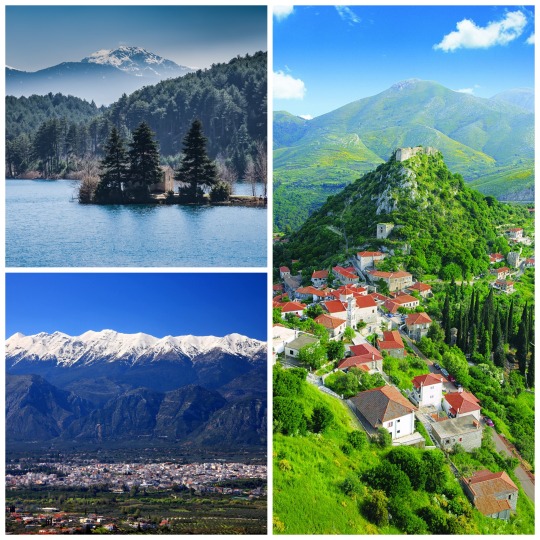
Lake Doxa in Feneos, a village in Mount Menalo of Arcadia and Mount Taygetus with Sparta on its foot.
Phew, okay that was it. I believe these are fairly good recs to examine and choose from. And again, to anyone that might wonder why I did not include this or that place, I know. I have left a lot of stuff out of this. But you gotta start somewhere. Anon, I hope this helps you out and also I hope you see this because it took me ages to finish it. In my defence, it was tricky!
Photos belong to their respective owners, I use them here as a visual guide for the Anon.
#greece#landscape#mountains#places#naturecore#travel#earth#travel guide#tourist guide#sterea hellas#epirus#thessaly#peloponnese#macedonia#ioannina#arta#trikala#karditsa#evrytania#boeotia#phocis#phthiotis#corinthia#arcadia#laconia#mainlandd#anon#ask#long post#long
23 notes
·
View notes
